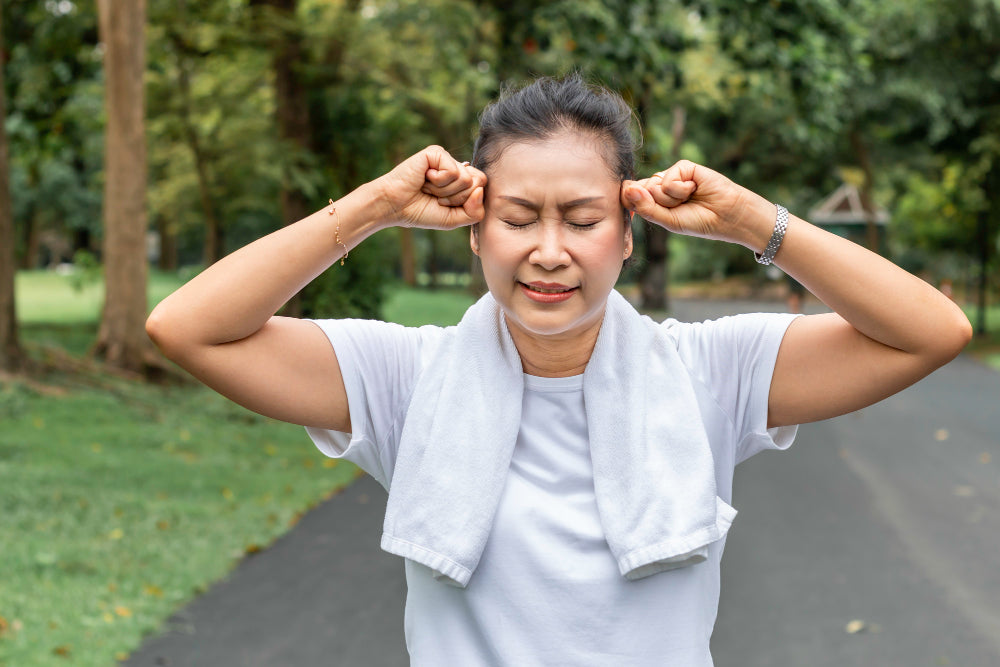Our bodies have been hurting since the fall of man. Ancient Greeks relieved fever with willow bark, Ancient Egyptians depicted people suffering injury and pain, divination and bone oracle inscriptions from the Shang Dynasty (16th Century BCE) depict the use of herbal remedies and acupuncture to treat pain. Even Shakespeare’s Macbeth acknowledges the need of relief from “sore labour” and “hurt mind”. It seems that ever since we could use our bodies, we’ve been suffering pain - and we’ve been trying to relieve it.
In 2023 there’s no end to options when it comes to treating pain. Mainstream options include medication, topical treatment, heat therapy, cold therapy, massage therapy and nutritional changes, but beyond that there is acupuncture, dry needling, chiropractic therapy, naturopathy, biofeedback, hypnosis, cognitive behaviour therapy, Chinese medicine, Ayurveda, Unani, homoeopathy… the list goes on. It’s hard to know which end is up. Do I need heat therapy or cold therapy? Is Panamax the same as Panadol? What’s the difference between an acupuncture needle and a dry needle? Here’s a little gallery walk of some of the big players in natural pain remedies and medicinal pain remedies.
Some common questions about natural pain remedies:
What’s the difference between acupuncture and dry needling?
Acupuncture is a traditional Chinese medicine technique that has been used for thousands of years. It involves inserting thin needles into specific points on the body known as acupuncture points, with the aim of improving the flow of qi (energy) through the body. Acupuncture is often used to treat conditions such as pain, nausea, anxiety, and insomnia, among others.
Dry needling, on the other hand, is a contemporary technique based on Western anatomical and neurophysiological principles. It involves the insertion of thin needles into trigger points (tight knots of muscle tissue) with the aim of releasing tension and improving muscle function. Dry needling is often used to treat musculoskeletal conditions such as back pain, neck pain, and headaches.
How can Ayurveda help pain relief?
Ayurveda is a holistic approach to health, considering the whole person, including their physical, mental, emotional, and spiritual aspects, rather than just focusing on the symptoms of a particular condition. However, someone practising Ayurvedic principles can experience pain relief through the use of:
Herbal remedies such as turmeric, ginger, ashwagandha, and boswellia.
- Ayurvedic massage: The use of warm herbal oils to help soothe and relax the body in Abhyanga massage can help to improve blood flow and reduce muscle tension, which can help to relieve pain.
- Yoga and meditation: Yoga can help to stretch and strengthen muscles, improve flexibility, and reduce stress, which can all contribute to pain relief. Meditation can help to reduce stress and improve mental and emotional well-being, which can also help to reduce pain.
- Lifestyle changes: Ayurvedic practitioners may recommend making changes to your diet and lifestyle to help reduce pain. This may include avoiding foods that are known to cause inflammation, getting regular exercise, and practising stress-reduction techniques.
How does chiropractic therapy help with pain?
When the spine is misaligned, it can put pressure on nerves and interfere with the normal functioning of the nervous system. This can result in pain, inflammation, and other health problems. Chiropractors realign the spine and other joints in order to help the body’s overall function and ability to heal itself. The hands-on technique of chiropractic therapy can restore joint mobility and alleviate pain as well as reduce inflammation and relieve muscle tension.
Some common questions about medicinal pain remedies:
What is the difference between Panadol and Panamax?
Both Panamax and Panadol are brands of paracetamol - a synthetic compound that belongs to a class of drugs known as analgesics - to relieve pain - and antipyretics - to relieve fever. The difference between them comes down to three letters - the “DOL” in Panadol and the “MAX” in Panamax. Other than this, both medications contain acetaminophen which is the active ingredient paracetamol. Other than that, the fact that Panadol is available in a variety of strengths, whereas Panamax is only available in 500mg may sway your choice when purchasing. But if you’re looking to ingest some paracetamol for pain relief, you’re basically asking if it’s pronounced tomato or tomato.
When does pain need codeine?
Codeine is only available UTC in Australia (under the counter - prescription required) because it is an opioid medication used to treat mild to moderate pain. You may find your OTC isn’t cutting it if you are experiencing dental pain, migraine headaches, postoperative pain or musculoskeletal pain. If your pain is so bad you need to see a doctor, it might be time for codeine.
How are paracetamol and ibuprofen different?
Ibuprofen and paracetamol are both commonly used OTC (over the counter) pain relievers, but they work in different ways and have different effects on the body.
Ibuprofen (such as Nurofen, Advil) belongs to a class of drugs known as nonsteroidal anti-inflammatory drugs (NSAIDs). By reducing the production of the chemical prostaglandin, ibuprofen can help to reduce pain, inflammation, and fever. Ibuprofen is often used to treat conditions such as headache, menstrual cramps, muscle aches - especially where there is inflammation.
Paracetamol (such as Panamax, Panadol), also known as acetaminophen, is a pain reliever and fever reducer that works differently from ibuprofen.. Unlike ibuprofen, paracetamol does not have anti-inflammatory properties, so it is not as effective at reducing inflammation. Paracetamol is often used to treat conditions such as headache and fever.
So whether you’ve thrown your back out, have a screen-time headache or you’re experiencing the monthly woe of being a woman, there are options upon options for your pain relief. If you’ve been doing the same thing over and over with no results, it may be worth trying something new or non-traditional, and it certainly may be worth looking at your health holistically rather than simply treating pain ad-hoc. As ever, any new regime, medicine or strategy should be embarked upon with as much knowledge as possible, as well as consulting the appropriate healthcare professional such as a pharmacist, GP or specialist.
Image Sources by: Freepik
Image Author: @freepik



















































